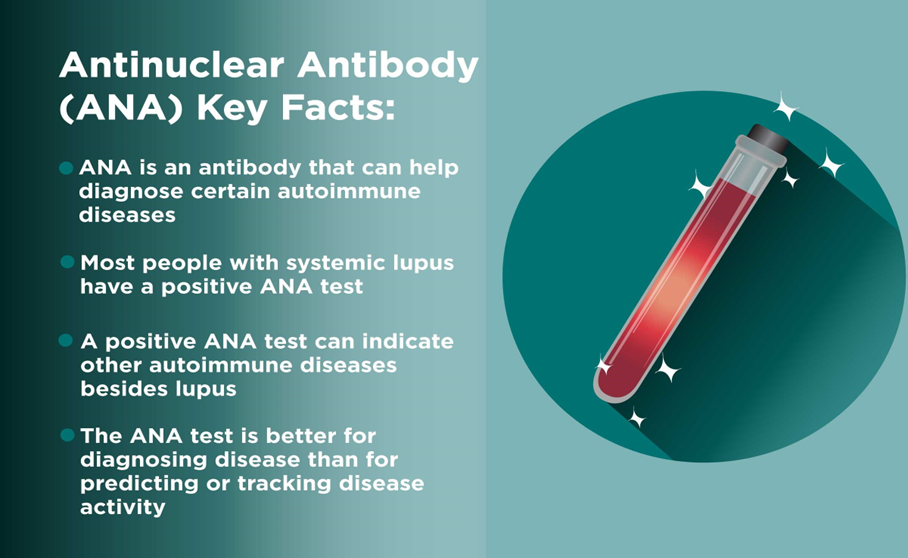A nurse is caring for a patient who has rheumatoid arthritis. Which of the following laboratory tests are used to diagnose the disease? (Select all that apply)
Antinuclear antibody (ANA) titer
BUN
Urinalysis
Erythrocyte sedimentation rate (ESR)
White blood cell count
Correct Answer : A,D,E
Choice A rationale:
Antinuclear antibody (ANA) titer is a blood test that detects the presence of antinuclear antibodies, which are autoantibodies that target the body's own tissues. These antibodies are often present in people with autoimmune diseases, including rheumatoid arthritis.
While a positive ANA test does not definitively diagnose rheumatoid arthritis, it can support a diagnosis when considered alongside other clinical findings and laboratory tests.

Choice B rationale:
Blood urea nitrogen (BUN) is a blood test that measures the amount of urea nitrogen in the blood. Urea nitrogen is a waste product that is produced when the body breaks down proteins.
BUN levels can be elevated in people with kidney disease, dehydration, or certain other medical conditions. However, BUN is not specifically used to diagnose rheumatoid arthritis.
Choice C rationale:
Urinalysis is a test that examines the urine for various substances, including cells, bacteria, and chemicals.
It can be used to diagnose a variety of conditions, including urinary tract infections, kidney disease, and diabetes. However, urinalysis is not typically used to diagnose rheumatoid arthritis.
Choice D rationale:
Erythrocyte sedimentation rate (ESR) is a blood test that measures how quickly red blood cells settle at the bottom of a test tube.
A high ESR can indicate inflammation in the body.
ESR is often elevated in people with rheumatoid arthritis, as it is a marker of inflammation.
Choice E rationale:
White blood cell count (WBC) is a blood test that measures the number of white blood cells in the blood. White blood cells are part of the immune system and help fight infection.
A high WBC count can indicate an infection or inflammation.
WBC count can be elevated in people with rheumatoid arthritis, as it is a marker of inflammation.
Nursing Test Bank
Naxlex Comprehensive Predictor Exams
Related Questions
Correct Answer is B
Explanation
Choice A rationale:
A respiratory rate of 28/min is not an indication that the intervention was effective. A normal respiratory rate for an adult at rest is between 12 and 20 breaths per minute. A respiratory rate of 28/min is considered tachypnea, which could be a sign of respiratory distress, not an improvement.
Choice B rationale:
Pink mucous membranes are a good sign. They indicate effective oxygenation and perfusion. When the body is receiving an adequate amount of oxygen, the skin, lips, and mucous membranes can appear pink. This is a positive outcome of oxygen therapy for hypoxia.
Choice C rationale:
A heart rate of 110/min is not an indication that the intervention was effective. A normal resting heart rate for adults ranges from 60 to 100 beats per minute. A heart rate of 110/min is considered tachycardia, which could be a sign of distress or compensation for hypoxia, not an improvement.
Choice D rationale:
Restlessness is not an indication that the intervention was effective. On the contrary, restlessness can be a sign of inadequate oxygenation. When the brain does not receive enough oxygen, a patient can become restless or anxious. Therefore, restlessness is not a positive outcome of oxygen therapy for hypoxia.
Correct Answer is A
Explanation
Choice A rationale:
Muscle twitching is a symptom of oxygen toxicity. Oxygen toxicity is a condition resulting from the harmful effects of breathing molecular oxygen (O2) at increased partial pressures. Severe cases can result in cell damage and death, with effects most often seen in the central nervous system, lungs, and eyes. Central nervous system symptoms can include muscle twitching.

Choice B rationale:
Redness of the face is not typically associated with oxygen toxicity. Oxygen toxicity primarily affects the central nervous system, lungs, and eyes. It does not typically cause redness of the face.
Choice C rationale:
Swelling around the eyes is not a common symptom of oxygen toxicity. The primary effects of oxygen toxicity are seen in the central nervous system, lungs, and eyes. However, this does not typically manifest as swelling around the eyes.
Choice D rationale:
A metallic taste in the mouth is not a known symptom of oxygen toxicity. Oxygen toxicity is a condition that results from the harmful effects of breathing molecular oxygen (O2) at increased partial pressures. It primarily affects the central nervous system, lungs, and eyes, but a metallic taste in the mouth is not a recognized symptom.
Whether you are a student looking to ace your exams or a practicing nurse seeking to enhance your expertise , our nursing education contents will empower you with the confidence and competence to make a difference in the lives of patients and become a respected leader in the healthcare field.
Visit Naxlex, invest in your future and unlock endless possibilities with our unparalleled nursing education contents today
Report Wrong Answer on the Current Question
Do you disagree with the answer? If yes, what is your expected answer? Explain.
Kindly be descriptive with the issue you are facing.
